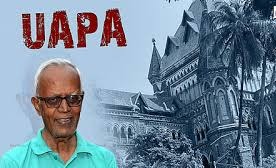Richardson, J.@mdashA preliminary point is taken in this appeal that no appeal lies u/s 102, Code of Civil Procedure. We are of opinion that this objection is good and that the appeal must be dismissed.
2. The appellant, however, succeeded in obtaining a Rule from this Court which raises the same question as is raised in the appeal. The question turns on the provision contained in Rule 9 of Order XXXVIII, Code of Civil Procedure. The rule runs as follows: "Where an order is made for attachment before judgment, the Court shall order the attachment to be withdrawn when the defendant furnishes the security required together with security for the costs of the attachment or when the suit is dismissed." It appears that on the 19th September 1911. certain property belonging to the defendant in the suit out of which these proceedings arise was attached before judgment. The suit was dismissed by the Trial Court on the 20th November 1911. On appeal the suit was decreed on the 28th January 1913. In the interval the property attached before judgment had been purchased at a private sale by the appellant, or rather the petitioner. In 1915 the decree-holder applied for execution of his decree by the sale of the property, on the footing that the attachment before judgment subsisted and that it was unnecessary for him to apply for re-attachment of the property. It is obvious that he was bound to frame his application for execution in that way because if the attachment before judgment did not subsist, the property having been purchased by the petitioner could not be attached or sold in execution. The point made on behalf of the decree-holder is that when the first Court dismissed the suit it omitted to carry out the direction in Rule 9 of Order XXXVIII of the Code that the Court should at the same time order the attachment to be withdrawn. If. that order had been made, there can be no doubt that the attachment would not have subsisted and would not have been revived by the fact that on appeal the decree of dismissal was set aside and the suit was decided in the plaintiff''s favour. As authority for that, if authority is needed, we may refer to the case of Sesirama Kumari v. Meherban Khan 9 Ind. Cas. 918 : 13 C.L.J. 243 decided by Mookerjee and Coxe, JJ. The argument is that the Court having omitted to make an order withdrawing the attachment, the attachment continued. This point was decided by the learned Munsif against the decree-holder and by the learned District Judge in his favour. With great respect to the latter I agree with the learned Munsif. The observations made by Mr. Justice Mahmud in the case of Ram Chand v. Pitam Mal 10 A. 506 : 6 Ind. Dec. (N.S.) 340 are as applicable to the present Code as to the previous Code and in my opinion they correctly state the law. In principle, as pointed out by Mr. Justice Mookerjee in the first case cited, the attachment before judgment should come to an end when the suit is dismissed. And I agree with Mr. Justice Mahmud when he says, speaking of the Code of 1882, that the part of the Rule requiring the Court to remove the attachment was never intended "to be more than directory. There is no doubt that in order to avoid all possible doubt and difficulty the Court should, when dismissing a suit, at the same time make the order directing the attachment to be withdrawn. But even if the order is not made, in my opinion, on the dismissal of the suit the attachment before judgment falls to the ground.
3. Some attempt was made to argue that Rule 11 of Order XXXVIII has made some change in the law by reason of the word "subsequently" which appears in that rule. The rule is as follows.--"Where property is under attachment by virtue of the provisions of this Order and a decree is subsequently passed in favour of the plaintiff, it shall not be necessary upon an application for execution of such decree to apply for a re-attachment of the property". But that rule cannot be read in the way in which the learned Pleader for the respondent seeks to read it. It applies only where the property is under attachment and a decree is passed subsequently. It is begging the question to say that the property remains under attachment after the suit has been dismissed or that it revives when an appeal is lodged. If the property is not under attachment at the date of the appeal, this rule can have no application even though a decree be subsequently made in favour of the plaintiff
4. It is obvious that if the suit is dismissed and no appeal is preferred, the attachment, whether an order withdrawing it is made or not, must cease,'' and I cannot see that the filing of an appeal makes any difference.
5. For the reasons indicated, the judgment of the District Judge is, in my opinion, erroneous and must be set aside. The Rule is accordingly made absolute.
6. It has been suggested that no question of jurisdiction arises which justifies us in interfering with the District Judge''s order u/s 115, Code of Civil Procedure. But clearly if the property is not under attachment, the District Judge had no jurisdiction to direct it to be sold without being first attached. The question raised is, therefore, one which falls within the scope of Section 115.
7. The result is that the Rule must be made absolute and the order of the Court below set aside. The petitioner is entitled to his costs which are assessed at one gold mohur.
Beachcroft, J.
8. I agree.

